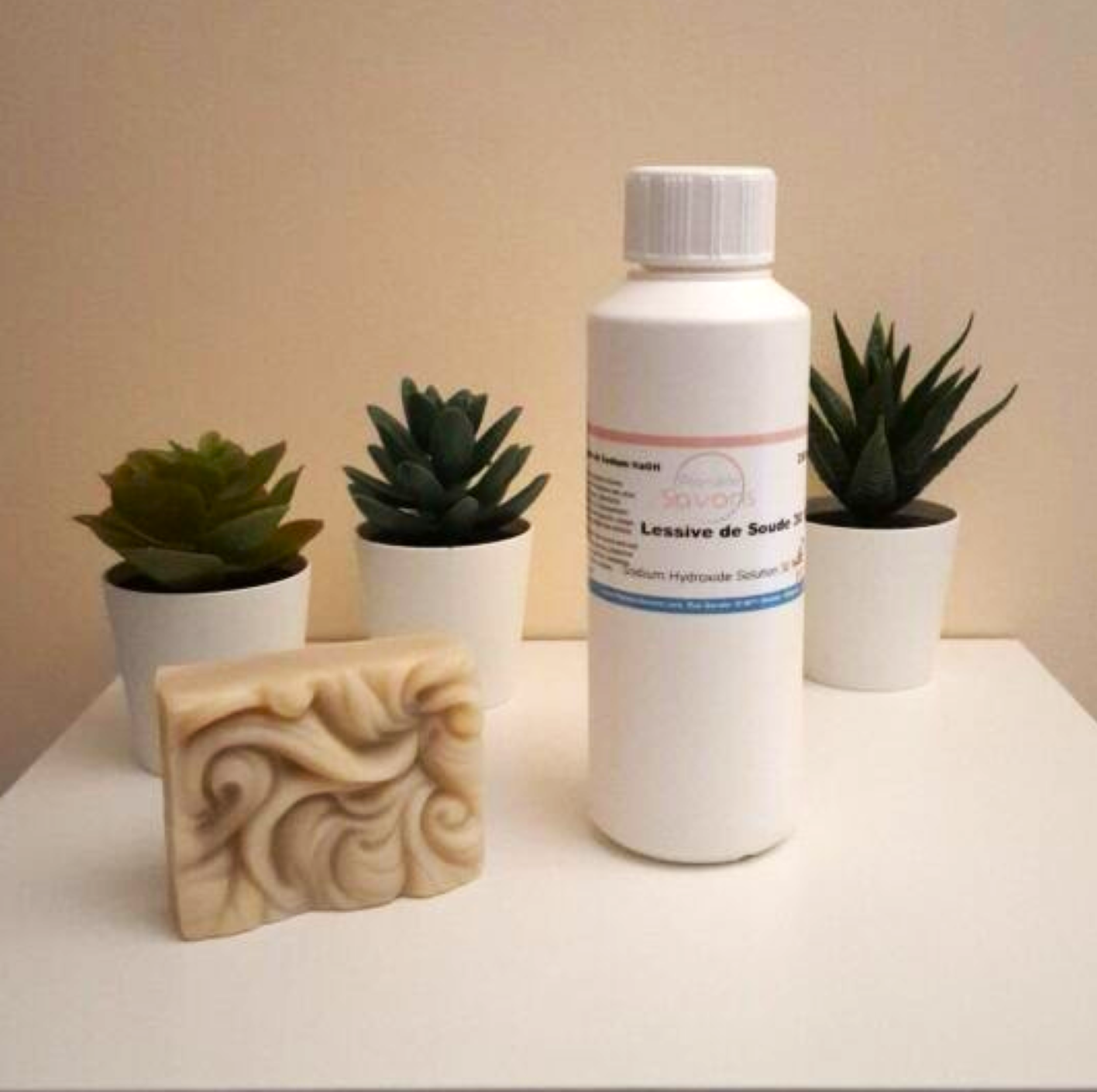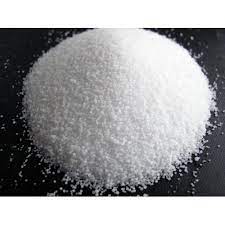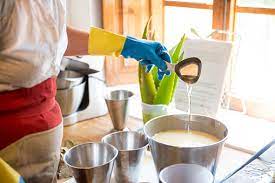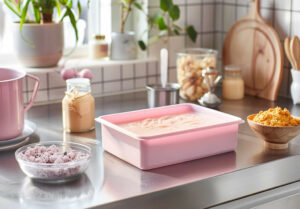The choice is yours: Micro-Pearl Soda or Liquid Soda?

Hello to all natural soap lovers! Today, I’m taking you into the fascinating world of cold saponification. Together, we’re going to explore the essential role of soda ash, in its two main forms: micro-pearl soda ash and liquid soda ash.
Whether you’re a beginner or an expert in the art of soapmaking, this post will provide you with valuable information on these essential ingredients of our artisanal practice.
So sit back with your favorite cup of tea and let’s dive into the world of homemade soaps!
Soda in Micro-Pearls: The Pillar of Saponification
Caustic soda, or sodium hydroxide (NaOH), is a key component in soap manufacturing. The microbead form is often preferred for its purity and ease of use.
What is Micro-Pearl Soda?
Micro-pearl soda is a white solid in the form of small beads. This granulated form facilitates handling and precise measurement, essential for successful saponification. When we soapmakers talk about microbead soda, we’re referring to the crucial ingredient that transforms vegetable oils into soap through a well-defined chemical reaction.

How to use soda in microbeads?
The use of soda in microbeads in cold saponification requires certain precautions. It’s important to always wear gloves and goggles, and to work in a well-ventilated area to avoid direct contact with skin and eyes.
To use it, we carefully dissolve the microbeaded soda in distilled water before incorporating it into our blend of vegetable oils. This dissolution generates heat, so the solution must be allowed to cool to room temperature before incorporating into the oils ( References: Instructions for use/ Using Caustic Soda).
Advantages of Micro-Pearl Soda
- Precision: Enables exact dosage for successful saponification.
- Stability: Long-term storage without quality deterioration.
- Ease of handling: less volatile dust than other forms of soda ash.
- Recipe flexibility: One of the great advantages of soda in microbeads is the ability to replace water with other liquids to dissolve the soda. This allows you to create an infinite number of customized recipes. For example, you can use fresh carrot juice to add natural color and vitamins to your soap, donkey milk for its moisturizing properties, oat milk to soothe sensitive skin, or even breast milk for a particularly gentle soap. Cucumber juice can add extra freshness, while the addition of beer gives a creamy, richly foaming soap (thanks to the sugar in the beer). This creative freedom is a real asset when it comes to personalizing your soaps according to your needs and desires.
Liquid soda: a ready-to-use alternative
Liquid lye is another form commonly used by soap makers. It’s a ready-to-use solution of sodium hydroxide already diluted in water.
What is soda ash?
Liquid lye comes in the form of an aqueous sodium hydroxide solution. This form is particularly appreciated by those who prefer a more direct approach to soap preparation, avoiding the dissolving phase of solid soda.

How to use Liquid Soda?
Liquid soda is used in a similar way to microbead soda, but without the prior dilution step. Simply pour it directly into the oil mixture at the desired temperature to initiate saponification.
It’s important to note that liquid soda must always be used cold. Never heat this solution, as this could alter its chemical properties and compromise the safety of the process.
Advantages of Liquid Soda
- Convenience: no need to prepare a solution, it’s ready to use.
- Time saving: Eliminates a step in the manufacturing process.
- Safety: Less handling of solid chemicals, reducing the risk of dosing errors.
Cold Saponification: Soap Alchemy
The magic of cold saponification lies in the chemical reaction between vegetable oils and caustic soda (NAOH). When we mix these ingredients, we witness a transformation, a chemical reaction that creates our beloved soaps. Here’s a simple diagram to illustrate the reaction:
Huiles végétales + Soude (NaOH) -> Savon + Glycérine
Process explanation
- Mixing: Vegetable oils (such as olive, coconut or shea butter) are mixed with the caustic soda solution (water + Naoh).
- Emulsification: When you “mix” this mixture, it begins to thicken, indicating that the chemical reaction is underway. In soap jargon, this is called “La Trace” ( Cfr: Blog des Savonnières/ What is La Trace?).
- Saponification: Soda reacts with the fatty acids in oils to form soap and glycerine.
- Curing time: The mixture is poured into molds for 24/48 hrs before demolding. The soap bar is then cut and left to harden for several weeks.
- Keep in mind that caustic soda will no longer be present in your finished soaps!
Advantages and disadvantages of micro-pellet and liquid soda ash
Soda in Micro-Pearls :
- Advantages :
- Precise, adaptable dosing for different recipes.
- Easy storage and long life.
- Possibility of customizing liquids for dissolving.
- Disadvantages:
- Requires a dilution step, which can be intimidating for beginners.
- Handling requiring special precautions (mask, gloves, goggles, apron)
Liquid soda :
- Advantages :
- Ready-to-use, reducing preparation time.
- Simplifies the saponification process, especially for beginners.
- Disadvantages:
- Less flexible in terms of concentration customization (no liquid addition)
- May be more expensive than soda in microbeads.
- Handling requiring special precautions (mask, gloves, goggles, apron)
Conclusion: Choosing what suits you best
The choice between micro-pearl soda and liquid soda depends on your personal preferences and comfort level with the saponification process. For newcomers to the world of soapmaking, liquid soda can offer a simpler, safer approach.
However, for those looking to master the art and science of soapmaking, microbeaded soda offers unrivalled flexibility.
As a soap maker, I’m here to help you on your way. Please don’t hesitate to contact me if you have any questions or need advice.
Together, let’s explore and celebrate the beauty of creating natural soaps, one soap at a time!
Enjoy your creations, and see you soon for new soap-making adventures!



0 Comments